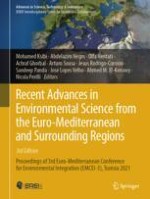2024 | OriginalPaper | Buchkapitel
Application of Remote Sensing and GIS for the Quantification of Spatiotemporal Changes—Land Use/Land Cover in Steppe Landscapes: Case of the Djelfa Region (Algeria)
verfasst von : Saida Sadi, Fateh Amghar, Nour El Islam Bachari
Erschienen in: Recent Advances in Environmental Science from the Euro-Mediterranean and Surrounding Regions (3rd Edition)
Verlag: Springer Nature Switzerland
Aktivieren Sie unsere intelligente Suche, um passende Fachinhalte oder Patente zu finden.
Wählen Sie Textabschnitte aus um mit Künstlicher Intelligenz passenden Patente zu finden. powered by
Markieren Sie Textabschnitte, um KI-gestützt weitere passende Inhalte zu finden. powered by
